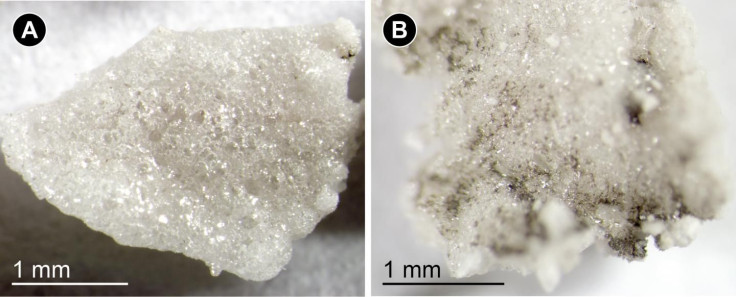Did Asteroids Bring Water To Earth? Rock-Blasting Experiment Bolsters Theory

The origin of oceans on Earth is a long-debated mystery. Many think water was delivered to our planet by asteroid impacts, while others posit it was present long before any of that happened.
The question still remains unanswered, but in order to shed some light on the former, the more widely considered theory, a group of scientists, hailing from Brown University in Rhode Island, conducted a series of experiments demonstrating asteroid impacts.
As the make-up of Earth’s water is similar to that found on carbonaceous asteroids, the group blasted marble-size projectiles, made up from similar water-rich meteorites, at a dry pumice volcanic rock.
They used the Vertical Gun Range, NASA’s high-power cannon, to fire the stony ammo at speeds going beyond 11,000 mph. This, combined with the firing angle, mimicked the high-speed impact of asteroids and allowed researchers to look for signs of water in the destroyed debris.
On analyzing the post-impact debris, the group was completely surprised. They found a whopping 30 percent of water indigenous to the asteroid being trapped inside the target. Most of the water, according to the researchers, was found in impact melt — rocks which melt under the extreme heat of the impact solidify after cooling down — and breccias formed by small rock fragments joined together.
This experiment led the researchers to posit that plumes of water vapor ejecting from the projectile under the heat of the impact got trapped inside the forming impact melt and breccias.
“So even though the impactor loses its water, some of it is recaptured as the melt rapidly quenches," Pete Schultz, co-author of the research, said in a statement.
Previous models only suggested water carried by the impactor should get vaporized due to the extreme levels of heat involved in the process.
"These experiments reveal a mechanism by which asteroids could deliver water to moons, planets and other asteroids,” lead researcher Terik Daly added in the statement. “It’s a process that started while the solar system was forming and continues to operate today."
Carbonaceous asteroids are thought to be some of the oldest known space objects in our solar system. They came to be when our stellar neighborhood was still at a nascent stage and contributed to the formation of planets. That said, it is highly plausible that the crashing of these objects, followed by similar processes, was how water came to a still-forming or already formed young Earth. The mechanism might even explain why traces of water have been observed in the moon’s mantle.
It is also worth noting that this theory might even apply to planets sitting in distant stellar systems.
“If impacts successfully trap water in growing planets in other planetary systems —and we have every reason to believe that they should — then many planets should have water on or in them,” Daly told Gizmodo. “If that water is a liquid (rather than water vapor or ice), then, bingo, you’ve got one of the three key ingredients for life as we know it.”
The study, titled “The delivery of water by impacts from planetary accretion to present” was published April 25 in the journal Science Advances.
© Copyright IBTimes 2024. All rights reserved.





















